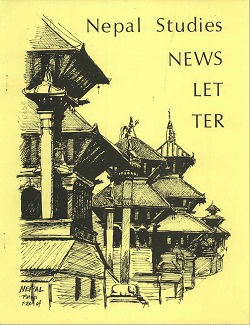Author Biography
Sabin Ninglekhu is a postdoctoral fellow at Nanyang Technological University, Singapore. He holds a PhD in Human Geography from the University of Toronto. His dissertation research interrogates the right to the city and everyday life as analytical categories with recourse to an account of extreme marginality among Kathmandu’s landless communities. Using social justice as a critical lens, Ninglekhu’s postdoctoral research investigates the everyday politics of post-earthquake rebuilding in Kathmandu. Drawing on ethnographic research, Ninglekhu combines postcolonial urbanism and critical urban planning to document the ‘invisible’ and subversive terrains of urban politics in cities in the global South.
Abstract
This article discusses how claims of the urban poor for the right to the city come up against governmental programs seeking to secure norms of private property, environmental sustainability, and elite aesthetics. Here, the city in question is Kathmandu, Nepal, and the urban poor are referred to as sukumbasi, squatters. Baviskar (2011) defines ‘elite politics’ as a mode of expressing anxieties of the self in relation to one’s physical surroundings. I interpret a liberal environmentalist project— the Bagmati Action Plan—in terms of such an elite politics, and explore the ways in which this river restoration program was taken up by the Nepali state. I show how bourgeois liberal environmentalism, when it encounters ‘the slum,’ produces spatial imaginaries, such as ‘pure rivers’ and ‘green riverbanks,’ and representations of sukumbasi as ‘inauthentic’ residents. This logic often furnishes the rationale for violently expelling sukumbasi from the slum and the city. Adopting the state’s governmental frames to distinguish between ‘authentic’ and ‘inauthentic’ sukumbasi, the Bagmati Action Plan’s leadership produced class cleavage among the landless—between squatters, who were alleged to be ‘landed’ and those given a ‘landless’ designation. As such, this article asks two questions: How does the threat of violence forge sukumbasi political subjectivity and inform renewed strategies of inhabitance? And, what implications these strategies have for understanding the challenges facing the politics of the poor? These inquiries locate the practices of the poor within the context of a ‘politics of urgency’— an ad hoc creative and counterintuitive ‘non-movement’ forged in the crucible of crisis, in which the organized practice of everyday life is disrupted and stretched in new and uncertain directions.
Acknowledgements
The author gratefully acknowledges funding support for the ethnographic research from the Asian Institute and Centre for South Asian Studies at the University of Toronto. He would like to thank his PhD supervisor, Katharine Rankin, for her relentless guidance. Thanks also go to Heather Hindman and Andrew Nelson for patiently reading the paper and providing helpful guidance through organized feedback and spontaneous conversation. Special thanks to the anonymous reviewer for being both generous and surgical in providing a much-needed and well-rounded critical evaluation of the paper. The comments, questions, and guidelines have helped reshape the paper. Finally, thanks to friends at the Society for Preservation of Shelter and Habitat in Nepal (Basobas), long-time collaborators in advocating for the rights of the sukumbasi inhabitants of Kathmandu.
Creative Commons License

This work is licensed under a Creative Commons Attribution 4.0 License.
Recommended Citation
Ninglekhu, Sabin. 2017. ‘Inauthentic’ Sukumbasi: The Politics of Aesthetics and Urgency in Kathmandu. HIMALAYA 37(1).
Available at:
https://digitalcommons.macalester.edu/himalaya/vol37/iss1/12
Ninglekhu_HIMALAYA_List of images.docx


